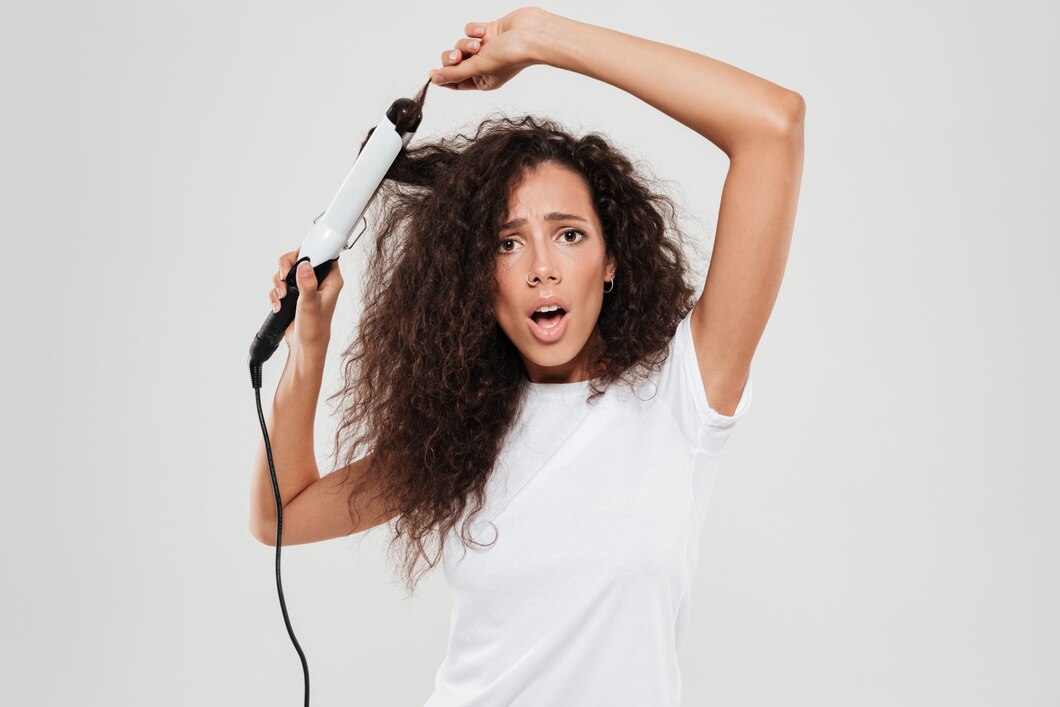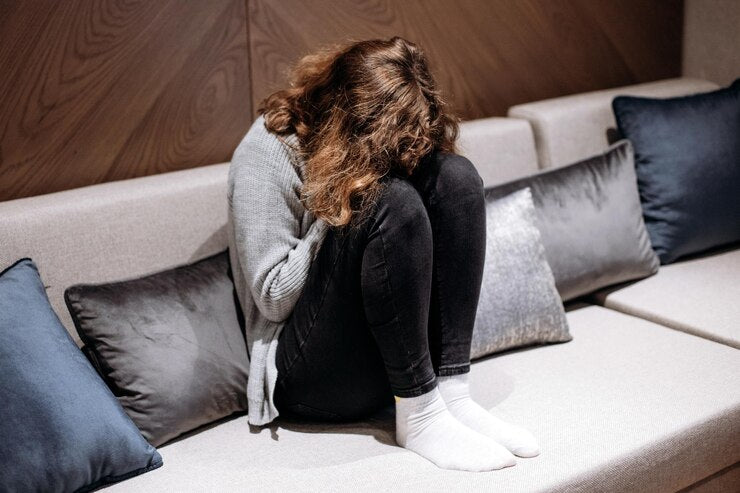
Many factors can cause hair damage, such as dyeing and bleaching using chemicals that damage the hair strands. Also, brushing your hair too vigorously can pull the strands, leading to split ends or breakage. But there is another factor that cannot be ignored when talking about the hair damage causes, which is heat. Continue reading to learn about the harmful effects of heat on your hair and how you can avoid them.
How does heat damage hair?
Using heat styling tools like hair dryers, flat and curling irons increases the chances of damaging your hair. Some of these tools do not allow for temperature control, or they may only have one setting of heat options such as low, medium, and high.
It's true that some tools have more control, but they have temperatures that can reach over 400 degrees Fahrenheit maximum. Most women expect that the higher the temperature, the better the final result will be. But this is not true.
Exposing your hair to high heat changes the shape of the keratin strands in your hair. Temperatures above 300 degrees Fahrenheit convert ⍺-keratin into β-keratin, ultimately causing weak hair that loses its elasticity and becomes more susceptible to damage. When the keratin dissolves, your hair remains in that shape at the molecular level, and cannot be changed or restored to its original shape.

Damaged hair lacks moisture
One of the causes of heat damage to hair is loss of moisture. Your hair is made up of different bonds, including 4% fats, oils, and pigments, 17% water, and 79% keratin proteins. The cortex is the inner part of the hair strand and contains water molecules bound to keratin proteins.
When you use heat, the natural oils are stripped from your hair, and the water molecules evaporate, changing the hair protein structure. High temperatures cause the water to dry out quickly, affecting the structure of each strand and can lead to cracking of the cuticle, the outer layer of the hair, making the hair more exposed to further damage.
Damaged hair has high porosity
The epidermis is the layer that protects the cortex. When the cuticles break, the damage can reach the cortex and your hair becomes very porous. Damaged cortex also leads to weaker hair, which becomes less elastic and more susceptible to breakage.
Hair porosity is classified as low, normal or high. To test your hair's porosity, drop a strand of hair into a cup of water. If the strand sinks to the bottom of the cup, your hair is very porous. If it floats to the top, it has low porosity, and if it stays in the middle, it has normal porosity.
Also, heat damage can cause oxidation of your hair color, whether the color is natural or from hair dye. The result is dull color, especially when the hair has high porosity. If you dye your hair, this may mean you need to use more dye, which can cause more damage.

What does damaged hair look like?
There are many signs that your hair is heat damaged. Damaged hair appears rough, dry, dull and frizzy. It also loses its natural shine due to the cuticle damage, which gives hair its shine. Curly, heat-damaged hair may develop waves, braids may not hold their shape, and fine hair may no longer appear straight and smooth.
On average, we lose about 50 to 100 hairs a day, but when hair is heat damaged, you'll likely notice more hair loss and frizz due to breakage.
How can you treat your heat damaged hair?
Hair changes due to thermal damage, and as we mentioned before, this change is permanent. But there are some treatments that you can do to control this damage as much as possible. You can cut your hair and remove the damage, but this may require a lot of cutting depending on how widespread the damage is. It can be from less than an inch to several inches.
If you are not ready to cut your hair, you can intensify your hair care by taking steps to deal with the strands damage as they grow, and trimming the ends frequently.

Very porous hair should be treated with conditioners, creams and oils such as argan or jojoba. This helps lock in moisture to help your hair feel softer. Also, high porosity hair needs more protein. Therefore, try to use products that contain keratin or wheat protein in their ingredients.
Protection
Use heat hair tools at a minimum, preferably between 200°F and 300°F when blow-drying, straightening or curling your hair.
Try to let your hair dry in the natural air whenever possible.
Use thermal protection products before exposing your hair to high temperatures, whether by using thermal styling tools, or by exposing your hair to direct sunlight.

At RIOBELO, we offer you Rio Magic Hair Thermal Smoothing and Protection Spray, equipped with special technologies with the benefits of Brazilian fruit extracts to give your hair the shine and health and completely protect it from thermal damage.
Follow these tips to protect your hair strands from heat damage and shine with beautiful, shiny, healthy hair every day.



